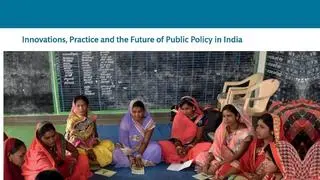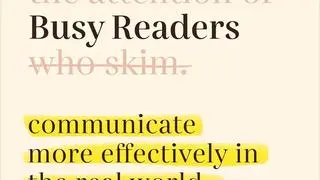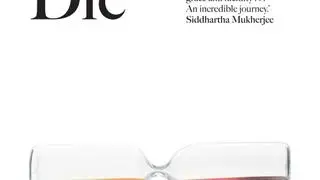When the man’s biographer is his wife, one can be certain the story would be laudatory. And that is what Vijayadevi Rane’s recent book - Maker of Modern Goa – the untold story of Pratapsingh Rane, clearly is. But happily, it goes well beyond, making the book an absorbing chronicle for anyone interested in the many layers of Goan history and politics.
The elegantly draped hardbound book is mostly about Rane, the man who never lost an election in 50 years, and remained Goa’s Chief Minister for over five cycles. But sprinkled with elements from Portuguese, Goan Catholic and Hindu ethnicity, the narrative becomes complex but thereby more interesting.
Starting with Goa’s first CM –Dayanand Bandodkar, who inducted Pratap Singh into politics, there are countless stories about the Rane clan and their close association with the erstwhile Scindia royal family of Gwalior. Pratap Singh’s almost soldierly schooling, his professional degree in business management acquired in the United States, his engagement by a corporate set up, (Telco) and how he was abruptly thrown into the hurly burly of Goa’s political affairs to become the Chief Minister many times over, has been told simply but engagingly.
The narrative is a valuable backdrop which both residents and visitors to Goa will enjoy. There is much to learn about the subjugation and forced conversions inflicted by the Portuguese rulers, the fierce combats that ensued, the refusal of some, like Rane’s ancestors, to accept suppression, the rise of the bhatkar class (landowners) and the role of Bandodkar, the man whose name springs into the book nearly 40 times. The political tumult against the ruling elites – the Goud Saraswat Brahmins and the Portuguese-Catholics - and the liberation of Goa in less than 24 hours enhance one’s understanding of Goa as it was then. The part played by the erstwhile Prime Ministers of India and the visits of several celebrities provide kaleidoscopic images of a slew of important events which go well beyond the title of the book.
Along the way, one learns that Rane was an equestrian medal winner and a horse racing jockey several times over, plus an accomplished boxer - something he never divulged to the stream of civil servants, each of who knew Rane well. Despite being born to privilege and destined to lead a polished if not plush life as a top corporate executive, overnight Rane found himself having to return to tend to his father’s estate in agrarian North Goa- where even today the family continues to live in the same family home.
Several civil servants who worked closely with Rane in the 1980s (including myself) have recounted how much development and good governance mattered to Rane– a refrain which resonates throughout the book. Those recollections exhibit how a politician who is direct in his dealings, liberal in his approach, and thoughtful and caring in action can still win elections and retain power. Albeit in India’s most educated, most affluent, and well-liked state - an unmatched gem in a gigantic country.
During my Goa years, I had many opportunities to watch the author, Vijayadevi, at close quarters. Her charm and scintillating laughter remain vivid memories even today, but her book presents a narrative which she seldom alluded to when she was the CM’s wife. The Rane couple, however, emerge exactly as they were then - urbane, sophisticated, upper-class - even royal - but with core attributes of modesty, courtesy, and kind-heartedness. Rane’s style of administration – spending time understanding things, establishing communication channels with those likely to be affected, his organisational abilities, and the complete absence of arrogance have been captured with illustrative stories which ring true.
While the narratives of family history provide a detailed account of who married who amongst the erstwhile royal families of Gwalior in MP and Sandur in Karnataka, it is the machinations of Goan politicians and their self-serving brand of politics which often take centre-stage.Those events are important to understand Goan politics but minus knowledge of the dramatis personae involved, the stories of how Pratap Singh was overthrown by his political rivals, how he returned to power,only to lose or win it back, might faze a casual reader. Fortunately, the book has much more to offer than that muddied history.
More appealing are the recollections of legendary Goans - vocal maestros like Kesarbai Kerkar, Kishori Amonkar, Lata Mangeshkar, the tradition of temple performers and all-night concerts -- a world which stands apart from the feisty notions many visitors carry of Goa. The contributions of Master painters like Francis Newton and V S Gaitonde find their place in the narrative, as does that of the eminent Goan architect Charles Correa who designed that haven of art and culture – the Kala Academy. Rane remained the chairman of Kala Academy for nearly three-decades and fiercely guarded it from politics. He was witness to Gyani Zail Singh, the then President of India stomping out of Goa’s 25th anniversary of liberation celebrations because Lata Mangeshkar declined to sing at Mahamahim Rashtrapatiji’s request.
In one sentence, Vijayadevi was the talisman that buoyed up Pratap Singh’s political and personal life. And made this tale worth telling- and reading.
(Shailaja Chandra was a career civil servant for almost 40 years having held assignments in the Central Government in the Ministries of Defence, Power and Health. At the state level, Ms. Chandra was posted in Manipur, Goa and the Union Territories of Delhi and the Andaman & Nicobar Islands).
Check out the book on Amazon.








